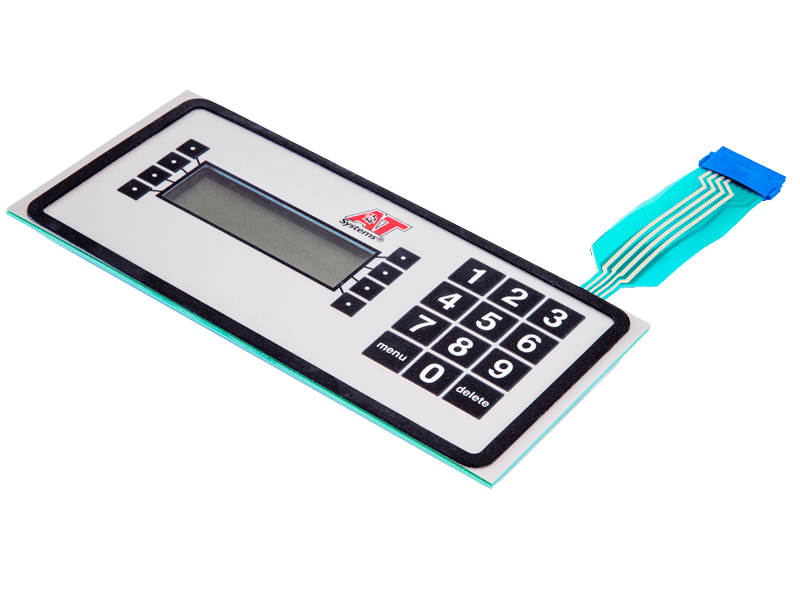Comprehending the Relevance of Membrane Switches in Interface
Membrane switches are important components in the design of reliable individual interfaces, promoting not just capability however additionally boosting visual allure and individual interaction. As we explore the future fads and various benefits linked with Membrane innovation, it becomes clear that these buttons are a lot more than just components; they stand for a merging of development and practicality.
What Are Membrane Switches?

The spacer layer, which consists of sticky properties, enables the separation of the circuit layer from the overlay, making sure that the switch continues to be in a non-activated state until pressed. When pressure is put on the overlay, it compresses the spacer layer, linking the void and finishing the circuit in the underlying layer. This style not only minimizes the physical space required for typical mechanical buttons yet likewise improves the resilience of the device, as Membrane switches are generally immune to dust, moisture, and other ecological aspects.
Frequently discovered in applications varying from consumer electronics to medical gadgets, Membrane switches are essential to modern technology, offering a user-friendly and effective user interface that straightens with contemporary style needs.
Advantages of Membrane Switches
While countless switch technologies exist, Membrane Switches deal distinctive benefits that make them particularly desirable in numerous applications. One of the primary advantages of Membrane switches is their portable style, which enables for space-saving executions in devices where real estate is limited. Their thin profile not only boosts aesthetic allure yet additionally promotes light-weight construction.
Another considerable advantage is their resistance to environmental elements. Membrane buttons are generally secured against moisture, dirt, and pollutants, making them optimal for use popular atmospheres, such as medical gadgets and commercial tools. This sturdiness expands the lifespan of the switch, decreasing maintenance expenses and improving integrity.
In addition, Membrane buttons can be tailored to fulfill particular design requirements, integrating distinct graphics and colors that improve individual interaction. Their responsive feedback options can additionally be tailored to provide an enjoyable individual experience. Furthermore, Membrane buttons are cost-effective, particularly in high-volume applications, as they can be created successfully.
Applications in Various Industries

In the consumer electronics market, Membrane switches prevail in tools such as microwaves, washing devices, and remotes. Their tactile responses and visual choices improve customer experience while providing a streamlined, modern-day appearance. Furthermore, vehicle producers use Membrane switches in control panel controls and infotainment systems, where area is limited, and user interaction is crucial.
Additionally, the commercial field leverages Membrane switches in control panels for machinery and devices, permitting instinctive procedure in often harsh environments. Their resistance to chemicals and wetness ensures longevity and reliability in these applications. Overall, the adaptability of Membrane Switches adds dramatically to their prevalent usage, making them crucial in numerous technological domain names.
Design Considerations for Membrane Buttons

When creating Membrane switches, several crucial factors to consider have to be taken into consideration to make sure ideal functionality and user experience. The selection of materials is vital; picking long lasting, high-quality Discover More Here substrates can boost the button's durability and resistance to environmental factors such as wetness and temperature variations.
Second of all, the design of the graphic overlay should prioritize clarity and ease of usage. Icons and text should be clear, and additional resources the format must assist in user-friendly communication (membrane switches). Furthermore, responsive feedback is necessary; integrating a responsive dome or other devices can improve the customer experience by giving physical confirmation of activation
An additional vital aspect is the button's electrical performance. Designers should make certain that the conductive traces are effectively made to reduce resistance and avoid signal interference. This involves analyzing the needed actuation force and guaranteeing compatibility with the digital components they will certainly interface with.

Future Fads in Membrane Technology
As innovation proceeds to breakthrough, Membrane switches are positioned to evolve considerably, driven by developments in products and making strategies. One emerging pattern is the unification of advanced products, such as conductive inks and adaptable substrates, which enhance toughness and minimize the total weight of Membrane switches. These materials not only enhance the responsive action however additionally permit the style of switches that can stand up to harsher environmental problems.
In addition, the assimilation of touch-sensitive modern technologies is changing Full Article traditional Membrane Switches into even more interactive interface. Capacitive touch sensing units embedded within Membrane button panels can supply a much more responsive and intuitive individual experience, lining up with the expanding demand for sleek, modern-day layouts in customer electronics.
In addition, developments in printing strategies, such as digital and 3D printing, make it possible for fast prototyping and personalization of Membrane buttons. This flexibility permits producers to react faster to market needs and customer choices.
Lastly, sustainability is coming to be a significant focus, with manufacturers discovering environmentally friendly materials and processes. As these fads unravel, the future of Membrane innovation promises enhanced capability, visual appeal, and ecological duty, solidifying their duty in sophisticated interface throughout different markets.
Conclusion
In verdict, Membrane Switches represent an essential part in the design of customer interfaces, incorporating functionality with visual versatility. As innovations in modern technology continue, the development of Membrane buttons is expected to further improve customer interfaces, driving innovation and boosting use in a significantly complex technical landscape.
Membrane buttons are essential components in the design of reliable individual interfaces, promoting not just capability but additionally enhancing visual appeal and individual interaction.Membrane Switches serve as a crucial element in various customer interfaces, helping with a smooth interaction in between customers and electronic tools.While countless switch technologies exist, Membrane Switches offer distinctive advantages that make them particularly desirable in numerous applications.Moreover, Membrane switches can be personalized to fulfill certain layout needs, including unique graphics and shades that improve individual communication.In verdict, Membrane Switches stand for a vital component in the layout of individual interfaces, integrating capability with visual flexibility.
Comments on “Membrane Switches: The Best Choice for Compact and Reliable Controls”